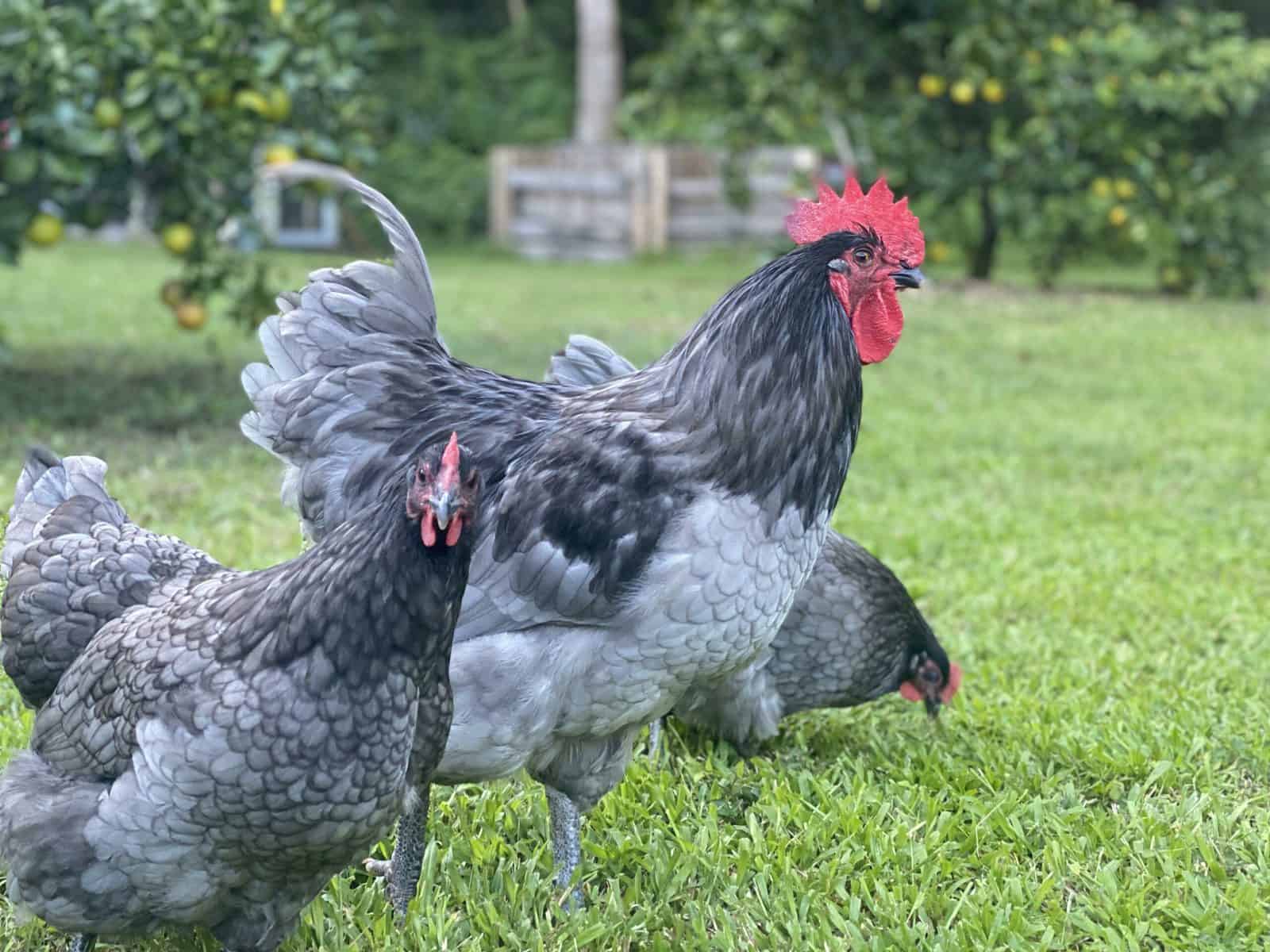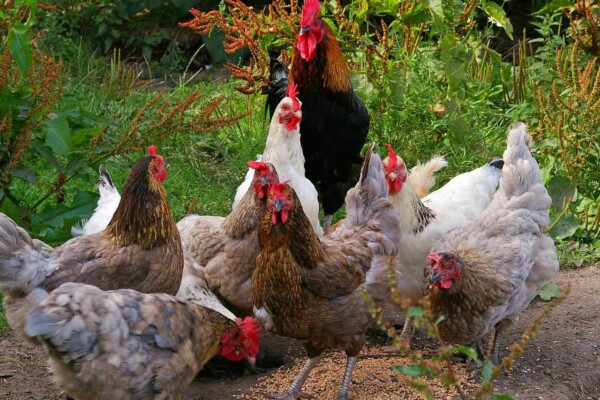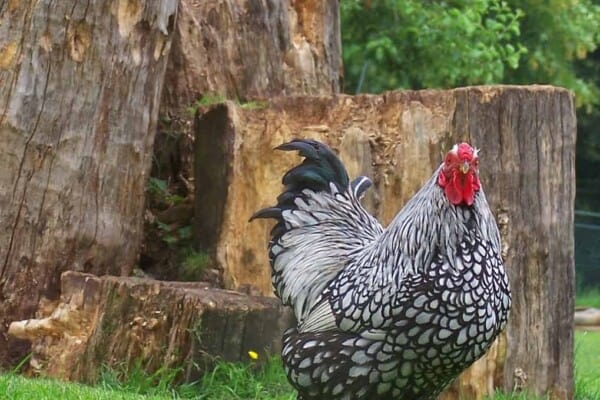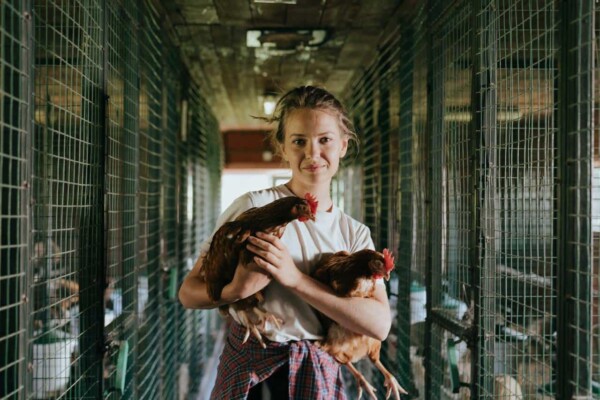Despite the fact that they haven’t been around for that long, Australorp chickens have already made quite a reputation for themselves around the poultry industry simply because of how unique and profitable they are.
Their name is actually a contraction of the Australian black Orpington, and despite the fact that this breed has had more than a handful of nicknames over the years, the Australorp was the one that stuck around the most and was picked as the official name for them.
As you can already tell from their name, this chicken breed has made its way from Australia, to the point where it is even considered to be the country’s honorary National bird.
So, in this article we will take our time to showcase everything that there is to know about them, regardless of whether you are looking to add them to your farm, or if you’re just interested to see what they have to offer you.
With all that being said, let’s start off this guide with a little introduction to the famous Australorp chicken breed:
The History of the Australorp Chickens

In case you didn’t know by now, the Orpington chicken breed was actually brought to Australia by none other than William Cook himself, as he wanted to create a dual-purpose bird that could easily adapt to the harsh Australian climate.
In order to get it they pretty much took the Orpington breed and they crossbred it with the Rhode Island Reds, to take on their excellent egg-laying abilities and transfer it to the new breed.
The Orpington breed had already made quite a reputation for itself as one of the best breeds in terms of its meat quality, and as we all know when one breed attracts a lot of attention, the people in charge will always try to improve it to up their sales.
So, by 1920, the teams that were put in charge of this project ended up crossing the Rhode Island Reds, the White Leghorn, the Minorcas, the Langshan and the Plymouth Rocks, to get the phenomenal Australorp chicken breed ready to be sold on the open market.
23 of these specimens ended up laying as many as 1,857 eggs per year together, meaning that they could easily get as many as 310 eggs per bird. On top of that their meat was also exceptional, making this one of the most successful crossbreeding sessions we’ve ever seen in the poultry industry.
Before long they became known as the Black Australorps but since a lot of them were white or blue as well, it didn’t take them long to drop the color out of their name and simply refer to them as the Australorp chicken breed.
Despite the fact that the breed was very shy at first, it quickly adapted to its newfound attention and soon after it also became known as a very good pet for families that were looking for a chicken to parade around the house.
A Brief Description of Australorp Chickens

As far as we know, the only Australorp chicken that is recognized by the American Poultry Association is none other than the black colored one, as any other color is considered to be a mutation of some sort.
The Australian Poultry Society on the other hand is a bit more lenient when it comes to its depiction of what a standard Australorp should look like, going as far as to accept black, blue and even white varieties as recognized members of the breed.
Lastly, we would like to mention the fact that the South African Poultry Society has gone as far as to also acknowledge the buff, splash, wheated laced, and golden colors as well.
But what exactly does the standard Australorp chicken look like? Well, in technical terms it is a very heavy bird with close-fitting, soft feathers. Most experts will refer to it as a heavy, soft feathered English bird and usually it will have a very upright stance with its tail way up there.
Its body is relatively round and solid, which can easily be spotted upon inspecting its breast. Everything with the exception of its feathers should be bright red colored, and as far as its comb is concerned, it should have around seven or so pointy ends.
They don’t usually carry feathers around their legs, and they have four toes on each foot, which can be spotted right off the bat thanks to their bright white color. Their eyes and beak are both jet black, and although not the heaviest birds out there, the standard Australorp male is around 8 to 10lbs while the hen is around 6 to 8lbs.
The main reason as to why they are considered to be large sized birds is because you can instantly tell how massive they are when compared with other breeds, such as the Bantams, which only weigh as much as 2 to 2.7lbs for the roosters, and 1.7 to 2.2lbs for the hens.
The Australorp Chickens Appearance

Now that we know what the official standard breed looks like, we should also tell you what the ordinary Australorp that you can get from a hatchery looks like.
First off, we should mention that the feathers of the black Australorp are known to have a certain beetle-green sheen to them which can be visible very easily in the sunlight. Because of this they are also considered to be very popular decorative chickens as well.
This breed is also known for its very distinct “stately” walk which it very obviously got directly from the Orpington breed. For the most part they will take confinement relatively well, although it is recommended that you give them ample roaming space so that they don’t end up hurting themselves.

They are relatively big birds, way larger and heavier than the typical chickens out there, so they will surely appreciate you giving them extra room to run around in. They’re not as big as Brahmas, but roosters can get pretty close in size.
They are also very good at catching bugs and morsels in your yard so if you feel like there are too many of them around you can always let your Australorp chickens roam around and pretty much watch them do their magic in front of your own eyes.
Also keep in mind the fact that they do need to be given a lot of space to run around in because they are quite prone to obesity if kept in confinement a bit too much.
They grow relatively fast as well, and while they can be quite shy at first, we can assure you that the more time you spend around them the friendlier they’ll get, to the point where you can even leave your children around them and not be afraid that they’ll get spooked and scratch them.
How Much Do Australorps Cost?

Considering the fact that this breed is widely acclaimed as one of the best additions to your coop, you’d probably think that they are quite expensive to purchase right? Well, no, actually they are considered to be some of the cheapest chickens that you could get yourself these days.
A baby pullet for example will be very inexpensive, around $2 to $5 per chick to be precise, and considering just how much value you’re getting from each and every one of them, let’s just say that they’re well worth the investment.
We should mention the fact that the Australorp breed is very inexpensive because it is so popular in the first place. On top of that this breed is very easy to come by which all adds up to it being one of the best options for any farmer out there.
How To Take Care of Australorps?

For the most part they are not all that different from any other large breed out there, although there are certain aspects that you need to keep in mind while taking care of them.
For starters, you should know that they are very adaptable creatures, they were literally crossbred for the sake of them surviving the harsh land of Australia so it shouldn’t come off as a surprise that they can easily withstand any environment you put them in. As far as their coop goes, you will definitely need to invest a decent amount into them since they will require at least 3 square feet per hen or so.
The smaller the coop is, the more likely you are to find the flock attacking one another or even becoming aggressive towards their caretakers which in this case would be you. Fencing wise, just remember the fact that the coop is the most important addition to their protection that you can invest into.
Because of this you should know that the fencing needs to be up to date and fully enclosed so no predators could sneak inside and attack your birds.

You should also invest in several different ways to make your coop predator-proof. As silly as it may sound, they can get very smart and crafty very quickly, so you should always try to keep yourself one step ahead, to make sure that they don’t have a way to breach through your fencing.
For example, we recommend that you don’t use regular chicken wiring to keep them out of harm’s way, since most predators can easily just walk through that and get to the chickens. Instead, we recommend that you invest into welded wires since these will keep most snakes or mice away.
Temperature wise you should try to keep in mind the fact that they were literally bred to resist the cold weather from Australia, so keep it down for now because that’s what they’re going to appreciate the most.
As far as their bedding is concerned, you can either opt for straws or sand for the base. Straws are always great because they help insulate the area while being very easy to manage and clean up after.

Just remember the fact that straws can easily collect mold if you’re not careful so always try and clean it at least once every couple of days if you choose to make them the base of your bedding. Sand on the other hand is a very popular choice because of how easy it is to sift through while also being very clean and safe for your chickens.
Lastly, we would like to mention the fact that their nesting space is also a very important part that you should invest heavily into since they are known as very prolific egg layers.
Their nesting boxes should always be sectioned off and considering just how utterly massive the chickens are, it shouldn’t come off as a surprise that the boxes should be way larger as well.
What Can I Expect from the Australorp Chicken Breed?

When they were first introduced into the ecosystem they were pretty much always just described as proficient egg layers and that has not changed to this day. They can lay as many as 250 eggs every year and thus is made all the better considering the fact that their eggs are very large and brown-colored.
They actually got so famous for their egg-laying skills that they even won several prizes in the past but you really shouldn’t forget the fact that these are still dual-purpose chickens that you’re looking at right here.
Their meat is rather exceptional and while they are definitely not advertised as such, their strong and thick bodies are very easy to use in most meals and they do fetch you a pretty penny on most markets.
Are Australorp Chickens Social?

As far as sociability goes, the Australorps are very good flock mates to be around, they can pretty much get along with any breed out there as long as they’re not being bullied around the whole time.
One curious thing that we noticed about them is the fact that they are very quick to pair up with one another, pretty much never separating again from the moment they pick one another.
They are very friendly especially with animals such as dogs and cats and if you do have a baby or a small child around you, you should know that the typical Australorp chicken will be a very good companion for them.
Just keep in mind though that while they will be very friendly with any creature that comes by, this can often times result in them being preyed upon especially by cats or dogs so always keep your eyes peeled on their interactions so no accidents happen.
What Should You Feed the Australorp Chickens?

Diet wise you should know that depending on whether your chickens are free-range or enclosed, you will need to opt for different options altogether.
If they are allowed to run around the whole time then you should know that they’ll be getting most of their nutrition from insects and plants, so you won’t have to worry too much about them needing any supplements added to their meals.
If they are kept in an enclosure though we recommend that you give your chicken a lot fresher fruits and vegetables so that they don’t lack in nutrients.
The Australorp chicken, just like any other chicken out there, is an omnivorous creature meaning that they can pretty much consume anything as long as they can fit it into their beaks.
Should You Buy Australorp Chickens?

Honestly, Australorps are very good for pretty much any barnyard setup out there because while they are relatively hardy and easy to take care of, they also are very useful to have around your farm and they are very friendly and loving creatures.
You can opt for the standard recognized chickens too but we recommend that unless you’re specifically aiming for them to be ornamental birds, you also take into consideration getting them in blue or white colors as well.
They are incredible egg layers and while they are not the most popular chicken breed out there, they are pretty much known to be one of the safest additions you could make to your coop and that’s a fact.
So, if you’re looking for a chicken breed that has a terrific personality, one that is very good at egg laying while also having some of the most delicious meat your money could get you, then you should definitely consider going for an Australorp chicken.
Conclusion

In summary, the Australorp chicken breed is a very gorgeous, hardy and sturdy breed that will be able to take on most environments with ease. They are very friendly and easy to take care of and as dual-purpose chickens go, they’re definitely up there as some of the best in the business.
Their eggs are especially popular on most markets and the best part about them is the fact that you can find them pretty much anywhere you look since they’re so famous in the first place.
Hopefully you learned something new about them through our guide though and we wish you good luck ahead with your new coop. We hope that no matter which chicken breed you choose to add to your flock, you won’t regret it in the slightest and that your profits will go through the roof in no time.
Contents
- The History of the Australorp Chickens
- A Brief Description of Australorp Chickens
- The Australorp Chickens Appearance
- How Much Do Australorps Cost?
- How To Take Care of Australorps?
- What Can I Expect from the Australorp Chicken Breed?
- Are Australorp Chickens Social?
- What Should You Feed the Australorp Chickens?
- Should You Buy Australorp Chickens?












